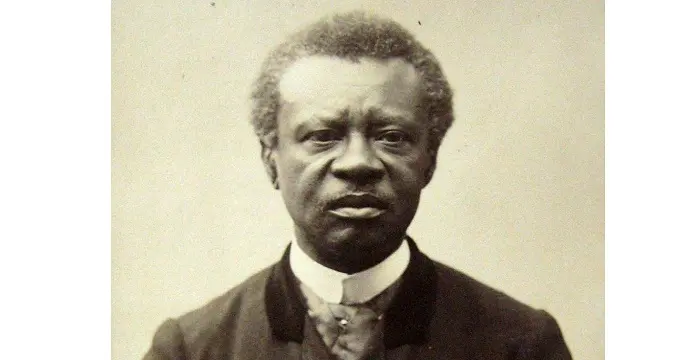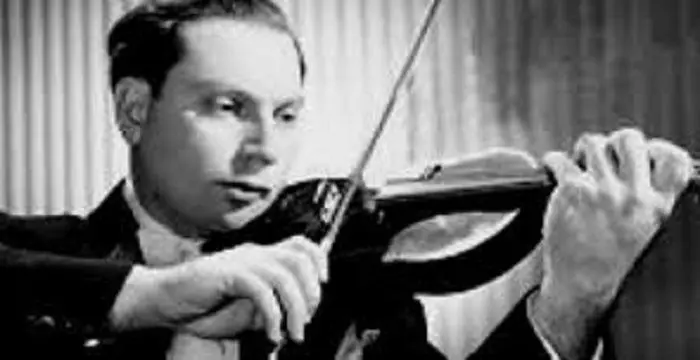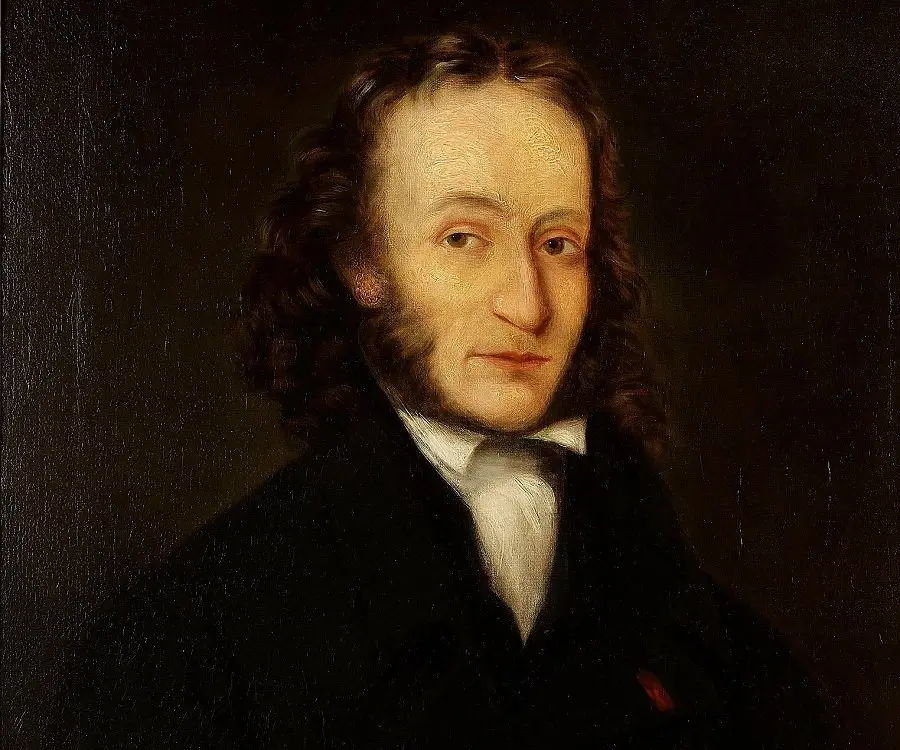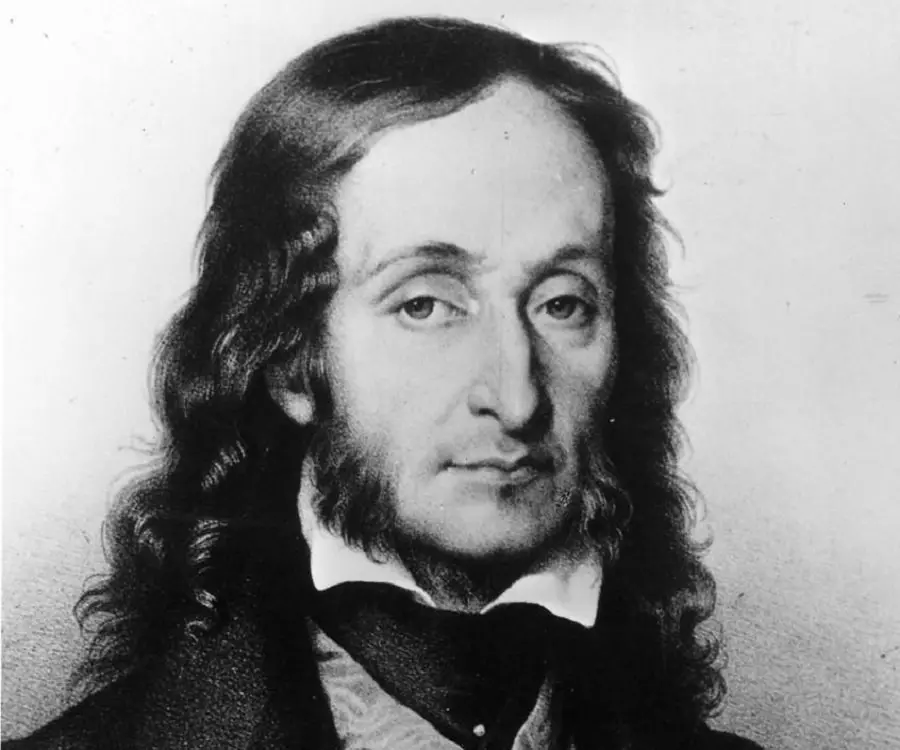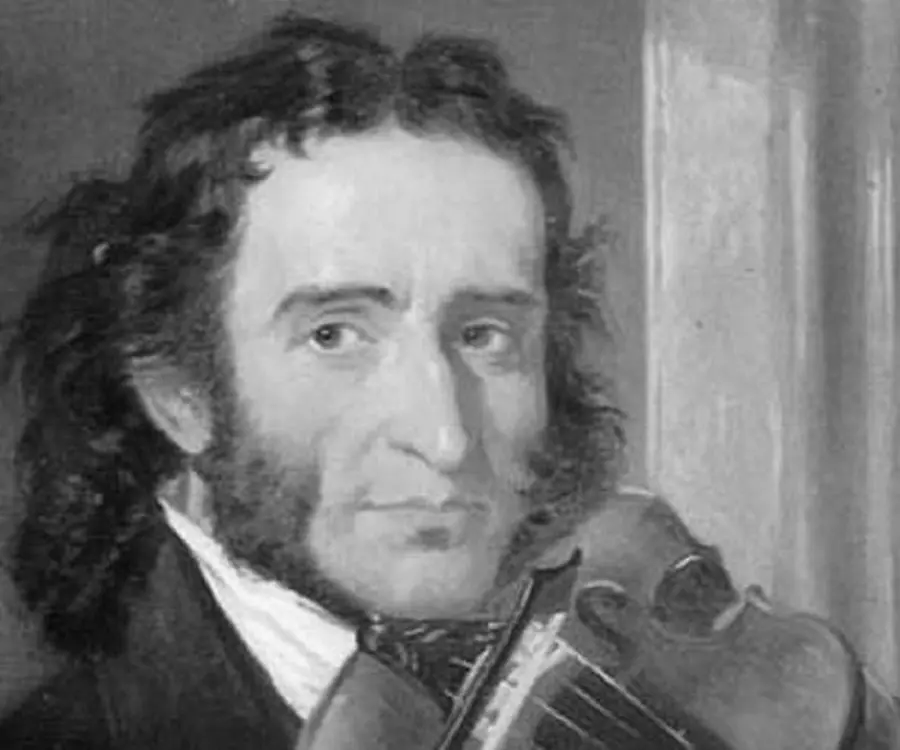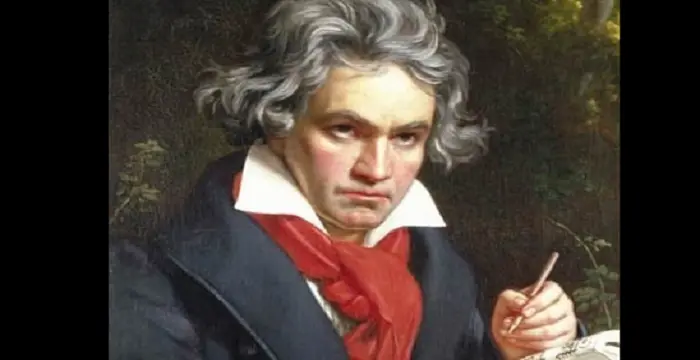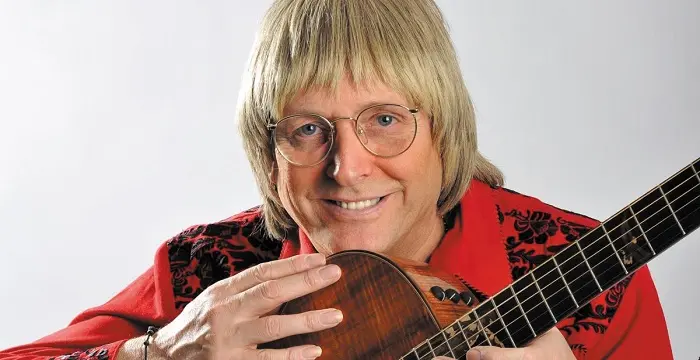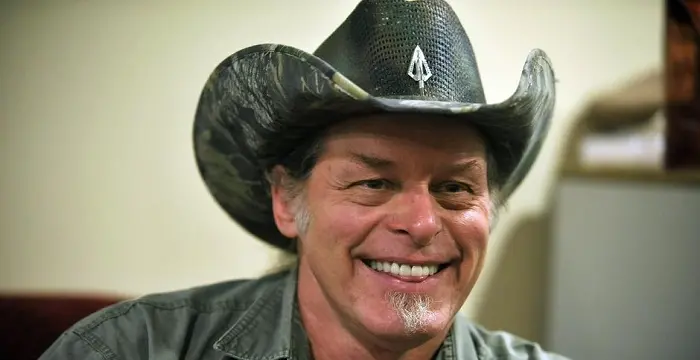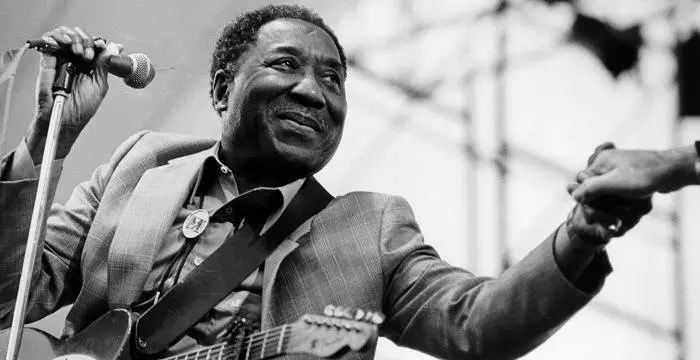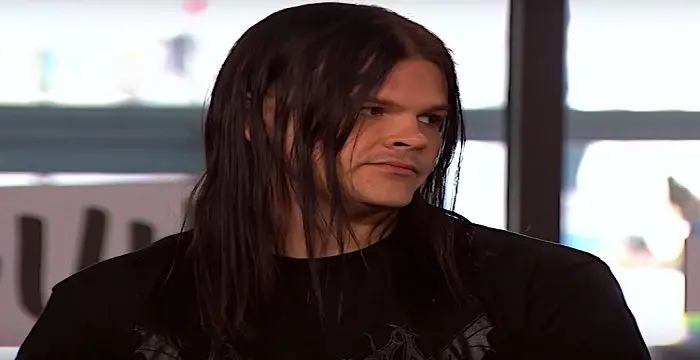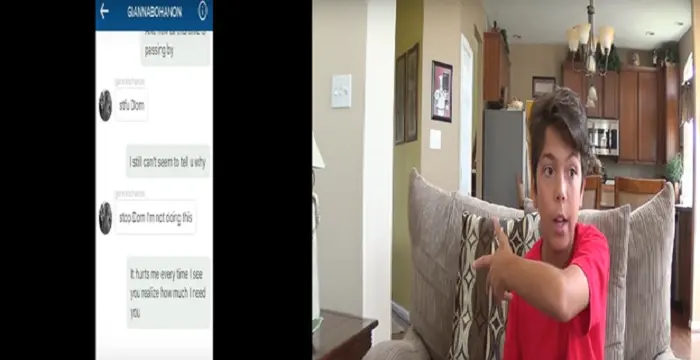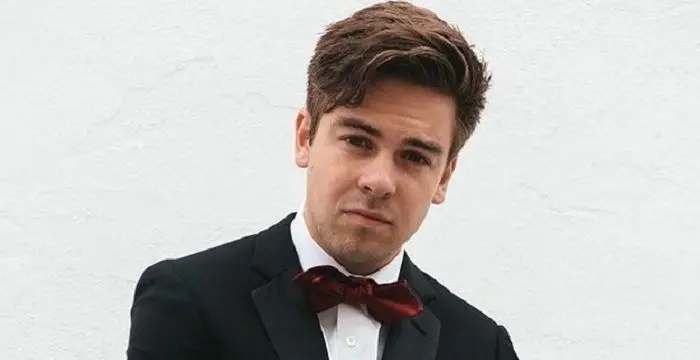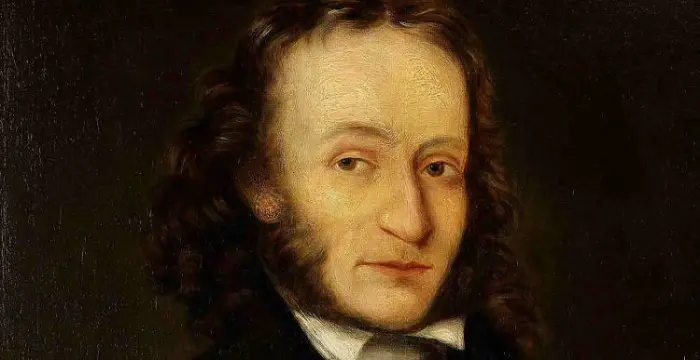
Niccolo Paganini - Violinists, Career and Life
Niccolo Paganini's Personal Details
Niccolo Paganini was a renowned Italian composer and violinist of 19th century
| Information | Detail |
|---|---|
| Birthday | October 27, 1782 |
| Died on | May 27, 1840 |
| Nationality | Italian |
| Famous | Musicians, Composers, Violinists |
| Siblings | Carlo Paganini |
| Birth Place | Genoa |
| Gender | Male |
| Father | Antonio Paganini |
| Mother | Teresa Bocciardo |
| Sun Sign | Scorpio |
| Born in | Genoa |
| Famous as | Violinist |
| Died at Age | 57 |
// Famous Violinists
Edmond Dédé
Read on to know more about the childhood, life and timeline of this Violinist and composer who proved his mettle as a child prodigy.
Vanessa-Mae
Vanessa Mae is a crossover British violinist. This biography provides detailed information about her childhood, life, achievements, works & timeline.
Isaac Stern
Isaac Stern was a Polish-born American musician. This biography of Isaac Stern offers detailed information about his childhood, life, works, achievements and timeline.
Niccolo Paganini's photo
Who is Niccolo Paganini?
Niccolo Paganini was a renowned Italian composer and violinist of 19th century. A genius, non-conformist, eccentric, unruly and a vagabond, he left an irrefutable mark on the history of instrumental music. One cannot go through the history of virtuoso performers without reading about Paganini for whom a chapter has already been created in golden letters. He was a violinist, a guitarist and a composer and one of the most distinguished virtuosos of his time. His technique and creativity was obvious in his compositions that made him one of the pillars of modern violin technique. Plagued throughout his life by illnesses, partly from birth and partly due to his extravagant lifestyle, he still became an inspiration and motivation for many composers and musicians, including Johannes Brahms, Frédéric Chopin, Franz Liszt, and Robert Schumann. The capability to transform even his minuses into positives is exemplified in his three octaves that he played across four strings in a hand span using his long fingers. All this contributed in giving him a permanent place in the history of 19th century music.
// Famous Composers
Ludwig van Beethoven
Ludwig Van Beethoven was one of the greatest composers the world has ever had. Check out this biography to know about his childhood, family life, and achievements.
Emina Jahović
Emina Jahović Sandal is a Serbian model, actress and singer-songwriter. Know more about her childhood, life, career, achievements and timeline in this biography.
John Denver
John Denver, a famous American singer-songwriter and activist, is remembered for songs like Take Me Home, Country Roads and Annie's Song. To know more about his childhood, career, profile and timeline read on
Childhood & Early Life
Niccolò Paganini was born on 27 October 1782 in Genoa, at that time the capital of the Republic of Genoa. His father, Antonio Paganini, was an unsuccessful commercial broker involved in shipping business. His mother’s name was Teresa (née Bocciardo) Paganini. Both of them were amateur musicians.
Niccolò, born third of his parents’ six children, was baptized on 28th October in Chiesa di San Salvatore in Piazza Sarzano. Among his surviving siblings were Biagio Paganini, Carlo Paganini and Teresa Bonati. Nothing is known about the other two.
Antonio Pagnani was a mandolin player at the local orchestra. He was quick to recognize Niccolò’s potential and started teaching him mandolin as soon as he was five and half years old. His mother, although illiterate, too nurtured her son’s talent as best she could.
As Niccolò turned seven, his father started teaching him violin. Since he was a mandolin player, he did not have much to offer to a genius like Niccolò. He therefore, took him to Giovanni Servetto, a violinist at the local orchestra, for further lessons.
Very soon, Servetto realized that his knowledge of music was not adequate for guiding such an extraordinary boy. He therefore sent Niccolo to Francesco Gnecco, who in turn sent him to his own teacher, Giacomo Costa.
In 1793, within a period of six months, Niccolò received thirty lessons from Costa. Pleased with his progress, Costa invited him to play in several churches in Genoa. His first documented public appearance was at the Church of San Filippo Neri on May 26, 1794.
His second public performance was at the collegiate Church of Nostra Signora delleVigne on 1 December 1794 on the occasion of Saint Eligius's Day. For this performance, he received his first mention at Avviso, a hand-written journal of the day.
Continuing to give public recitals, he once again appeared at Church of San Filippo Neri in May 1795, receiving special mention in the 30 May 1795 issue of Avviso. It said that “a harmonious concert performed by a pleasant 12-year-old boy, Mr Niccolo Paganini, pupil of Mr. Giacomo Costa, Professor of Violin, concluded with universal admiration and approval”.
As his fame began to spread, his father became more and more strict, making him practice up to fifteen hours a day. If Anthony thought he had not practiced hard enough he would make him practice more, withholding food. Niccolo thus had to withstand great physical and mental abuse.
By early 1795, Niccolò Paganini had established himself as a renowned musician in his native city, generally playing his own compositions at the concerts. The musicians there had nothing else to teach him. Realizing this, his father decided to take him to Parma to study with Allessandro Rolla.
To go and stay at Parma, one needed money and the family had none. So Anthony had him practice more so that he could raise enough money at the benefit concert to be held at Teatro di Sant 'Agostino on July 1795. The concert was a success, enabling father and son to leave for Parma in 1796.
On reaching Rolla’s home in Parma, they found the master sick in bed. As they waited for him, Niccolò Paganini noticed Rolla’s violin and a composition lying nearby. Taking up the violin he began to play it.
Rolla, though very sick, was overwhelmed by his performance and told the teenager he had nothing to offer. However, he did give him lessons for few months and then suggested that Paganini should study composition with Ferdinando Paer and counterpoint with Gasparo Ghiretti.
For around six months, Paganini studied with Paer and Ghiretti. While he composed twenty-four figures for four hands under the Paer’s guidance, studying with the Ghiretti, he composed huge quantity of instrumental music. He also gave number of concerts, both at Parma and Colorno, earning fame and money.
Early Career
The Paganinis returned to Genoa possibly in late 1796. By then, the city was under French control and his family had moved to Romairone. Paganini was forced to spend a quiet time, composing music, performing them at the local churches. They were so difficult that only he could play them.
This was also the period, he started practicing guitar; preferring to play the instrument in close quarters rather than in public concerts. In 1797, Paganini went on his first tour, giving around a dozen concerts at Milan, Bogona, Florence, Pisa and Leghorn.
In spite of his success, his father continued to control his life with an iron hand, making him practice his own compositions, often ten hours a day. Very soon, he started wishing to be free. His chance came, when in 1801, he visited Lucca, this time with his elder brother Carlo
In Lucca, he played successfully at the Festival of Santa Croce, held on 14 September, 1801. He now settled down in Lucca, being appointed first violin of the Republic of Lucca in the following year. Concurrently, he continued to attend concerts, earning sufficient amount from them.
He also continued to compose; starting his work on ‘24 Caprices for Solo Violin’ sometime in 1802. But away from parental scrutiny, he also developed many vices, spending his leisure hours gambling, drinking and womanizing. It is believed that during this period, he had an alcohol related breakdown, needing medical attention.
In 1805, Napoleon’s sister, Maria Anna Elisa Bonaparte Baciocchi Levoy, became the Princess of Lucca. In the same year, she appointed Paganini as the Second Court Violinist and also the violin tutor to her husband Felice Pasquale Baciocchi Levoy.
While under the employment of the Princess of Lucca, he composed significant amount of chamber music. Most notable among them were his sonatas, especially the Napoleon Sonata. Apart from that, he composed quarters for strings and guitars. ‘Duetto Amoroso’ was another important work of this period.
In 1807, as Maria Anna became the Grand Duchess of Tuscany, she transferred her court to Florence. Paganini too moved with the entourage to the city, living there as the Solo Court Violinist for around two years.
International Fame
Towards the end of 1809, after a tiff with the Grand Duchess, Niccolo Paganini left Florence to embark on a freelance career. He now travelled around Genoa and Parma, recognized as a virtuoso by the local audience. However, until then, he remained unknown elsewhere.
His first big break came when on 29 October 1813 he gave his first recital at Teatro alla Scala in Milan. It was hugely successful, attracting attention of prominent musicians of Europe. Within a period of ten weeks, he gave six more concerts at the same auditorium.
He soon began to be considered the foremost violinist in Europe, giving more than hundred concerts, in different Italian cities like Genoa, Parma, Florence, Turin, Naples, Bologna, Venice and Rome. This was also the period, when he incurred different diseases due to his undisciplined life, making him repeatedly ill.
In 1828, Paganini first went on an all-Europe tour. Starting with 14 concerts in Vienna, he stopped at every important city in Germany, Poland and Bohemia, finally settling down in Strasbourg, where he remained until 1831. His success led to a formation of a cult, where everything was ‘a la Paganini’.
In 1832, he visited Great Britain, touring England and Scotland, earning huge amount of money. In 1833, he settled in Paris, remaining there till September 1834. During this period he once again started suffering from different ailments, leading to frequent cancellation of his concerts, which hampered his career.
In September 1834, he returned to Genoa, where he started his work on publishing his compositions. He also appeared in number of concerts, playing for the first time at Teatro Carlo Felice on 30 November 1834. It was a tremendous success and the gallery was full long before Paganini appeared on the stage.
Paganini remained in Genoa until 1836, thereafter moving to Paris to set up a casino. It was an immediate failure, forcing him to auction even his musical instruments. In December 1838, he left Paris to spend his last years in Nice.
Major Achievements
Niccolo Paganini is best remembered for his ‘24 Caprices for Solo Violin Op 1’, which he wrote in three groups, between 1802 and 1817. They are in the form of études, with each number exploring a single facet of technique. Commissioned by the City of Genoa, the work was first published in 1982 on the occasion of his bicentenary.
Awards & Achievements
In 1827, Paganini was conferred with the Order of the Golden Spur by Pope Leo XII.
In 1828, while in Vienna, he was awarded with the honorary title of Chamber Virtuoso by the Emperor. He also received the medal of St. Salvator.
Personal Life & Legacy
It is believed that Niccolo Paganini suffered from genetic disorders like Marfan or Ehlers–Danlos syndrome. His appearance, along with expertise in music, gave rise to the rumor that he was associated with the devil and could play so well only because he had a pact with him.
Although he never got married, he had number of love affairs. Among them, his affair with Angiolina Cavanna produced a stillborn daughter. It is rumored that in May 1815, he was arrested for seducing Cavanna and was interred at Torre Grimaldina in Genoa until a settlement was reached. He always denied the charge.
Paganini also had a long lasting live-in relationship with dancer Antonia Bianchi. The two met in Milan in 1813, living together until he went on his European tour in 1828.
Paganini and Bianchi’s only child, a son named Achilles Cyrus Alexander, was born out of wedlock on 23 July 1825 in Palermo. Paganini had a close relationship with his son, taking him on his European tours and leaving him his main heir.
From his childhood, Paganini suffered from chronic illness, which was aggravated by his early practice schedule, frequent concerts and undisciplined lifestyle. As early as in 1822, he was inflicted with syphilis. Then in 1834, he was afflicted with tuberculosis, losing his voice in 1838.
In 1838, Paganini moved to Nice, where his condition further deteriorated. On 20 May 1840, the Bishop of Nice sent the local parish priest to perform the sacrament. Believing he would live, Paganini refused it. But he died suddenly from internal hemorrhaging on 27 May 1840 without receiving the last rites.
After his death, the Church denied his body a Catholic burial in Genoa because of his refusal to accept the sacrament and his alleged association with devil. After repeated request by his son, his remains were transported to Genoa four years later, but not given a burial.
It was only in 1876, that his body was laid to rest in Parma. In 1896, it was reinterred in the La Villetta Cemetery, also in Parma. A monument was later built for him there.
// Famous Musicians
Ted Nugent
Ted Nugent is a hard rock musician known for his hits ‘Stranglehold’ and ‘Cat Scratch Fever’. This biography of Ted Nugent provides detailed information about his childhood, life, achievements, works & timeline.
Muddy Waters
Muddy Waters was a blues musician referred to as the 'father of modern Chicago blues.' Check out this biography to know about his childhood, family life, achievements and fun facts about him.
Travis Bacon
Travis Bacon is an American musician and actor, better known as the son of veteran actors Kevin Bacon and Kyra Sedgwick. Find more about his family, birthday, etc.
Niccolo Paganini biography timelines
- // 27th Oct 1782Niccolò Paganini was born on 27 October 1782 in Genoa, at that time the capital of the Republic of Genoa. His father, Antonio Paganini, was an unsuccessful commercial broker involved in shipping business. His mother’s name was Teresa (née Bocciardo) Paganini. Both of them were amateur musicians.
- // 1793In 1793, within a period of six months, Niccolò received thirty lessons from Costa. Pleased with his progress, Costa invited him to play in several churches in Genoa. His first documented public appearance was at the Church of San Filippo Neri on May 26, 1794.
- // 1794His second public performance was at the collegiate Church of Nostra Signora delleVigne on 1 December 1794 on the occasion of Saint Eligius's Day. For this performance, he received his first mention at Avviso, a hand-written journal of the day.
- // 1795Continuing to give public recitals, he once again appeared at Church of San Filippo Neri in May 1795, receiving special mention in the 30 May 1795 issue of Avviso. It said that “a harmonious concert performed by a pleasant 12-year-old boy, Mr Niccolo Paganini, pupil of Mr. Giacomo Costa, Professor of Violin, concluded with universal admiration and approval”.
- // 1795By early 1795, Niccolò Paganini had established himself as a renowned musician in his native city, generally playing his own compositions at the concerts. The musicians there had nothing else to teach him. Realizing this, his father decided to take him to Parma to study with Allessandro Rolla.
- // 1795To go and stay at Parma, one needed money and the family had none. So Anthony had him practice more so that he could raise enough money at the benefit concert to be held at Teatro di Sant 'Agostino on July 1795. The concert was a success, enabling father and son to leave for Parma in 1796.
- // 1796The Paganinis returned to Genoa possibly in late 1796. By then, the city was under French control and his family had moved to Romairone. Paganini was forced to spend a quiet time, composing music, performing them at the local churches. They were so difficult that only he could play them.
- // 1797This was also the period, he started practicing guitar; preferring to play the instrument in close quarters rather than in public concerts. In 1797, Paganini went on his first tour, giving around a dozen concerts at Milan, Bogona, Florence, Pisa and Leghorn.
- // 1801In spite of his success, his father continued to control his life with an iron hand, making him practice his own compositions, often ten hours a day. Very soon, he started wishing to be free. His chance came, when in 1801, he visited Lucca, this time with his elder brother Carlo
- // 1801In Lucca, he played successfully at the Festival of Santa Croce, held on 14 September, 1801. He now settled down in Lucca, being appointed first violin of the Republic of Lucca in the following year. Concurrently, he continued to attend concerts, earning sufficient amount from them.
- // 1802He also continued to compose; starting his work on ‘24 Caprices for Solo Violin’ sometime in 1802. But away from parental scrutiny, he also developed many vices, spending his leisure hours gambling, drinking and womanizing. It is believed that during this period, he had an alcohol related breakdown, needing medical attention.
- // 1805In 1805, Napoleon’s sister, Maria Anna Elisa Bonaparte Baciocchi Levoy, became the Princess of Lucca. In the same year, she appointed Paganini as the Second Court Violinist and also the violin tutor to her husband Felice Pasquale Baciocchi Levoy.
- // 1807In 1807, as Maria Anna became the Grand Duchess of Tuscany, she transferred her court to Florence. Paganini too moved with the entourage to the city, living there as the Solo Court Violinist for around two years.
- // 1809Towards the end of 1809, after a tiff with the Grand Duchess, Niccolo Paganini left Florence to embark on a freelance career. He now travelled around Genoa and Parma, recognized as a virtuoso by the local audience. However, until then, he remained unknown elsewhere.
- // 1813His first big break came when on 29 October 1813 he gave his first recital at Teatro alla Scala in Milan. It was hugely successful, attracting attention of prominent musicians of Europe. Within a period of ten weeks, he gave six more concerts at the same auditorium.
- // 1813Paganini also had a long lasting live-in relationship with dancer Antonia Bianchi. The two met in Milan in 1813, living together until he went on his European tour in 1828.
- // 1817Niccolo Paganini is best remembered for his ‘24 Caprices for Solo Violin Op 1’, which he wrote in three groups, between 1802 and 1817. They are in the form of études, with each number exploring a single facet of technique. Commissioned by the City of Genoa, the work was first published in 1982 on the occasion of his bicentenary.
- // 1822From his childhood, Paganini suffered from chronic illness, which was aggravated by his early practice schedule, frequent concerts and undisciplined lifestyle. As early as in 1822, he was inflicted with syphilis. Then in 1834, he was afflicted with tuberculosis, losing his voice in 1838.
- // 1827In 1827, Paganini was conferred with the Order of the Golden Spur by Pope Leo XII.
- // 1828In 1828, Paganini first went on an all-Europe tour. Starting with 14 concerts in Vienna, he stopped at every important city in Germany, Poland and Bohemia, finally settling down in Strasbourg, where he remained until 1831. His success led to a formation of a cult, where everything was ‘a la Paganini’.
- // 1828In 1828, while in Vienna, he was awarded with the honorary title of Chamber Virtuoso by the Emperor. He also received the medal of St. Salvator.
- // 1832In 1832, he visited Great Britain, touring England and Scotland, earning huge amount of money. In 1833, he settled in Paris, remaining there till September 1834. During this period he once again started suffering from different ailments, leading to frequent cancellation of his concerts, which hampered his career.
- // 1834In September 1834, he returned to Genoa, where he started his work on publishing his compositions. He also appeared in number of concerts, playing for the first time at Teatro Carlo Felice on 30 November 1834. It was a tremendous success and the gallery was full long before Paganini appeared on the stage.
- // 1838 To 20th May 1840In 1838, Paganini moved to Nice, where his condition further deteriorated. On 20 May 1840, the Bishop of Nice sent the local parish priest to perform the sacrament. Believing he would live, Paganini refused it. But he died suddenly from internal hemorrhaging on 27 May 1840 without receiving the last rites.
// Famous Scorpio Celebrities peoples
Teddy Zois
Teddy Zois is an American Musical.ly star and social media personality. Let’s have a look at his family and personal life including age, date of birth, net worth, and fun facts.
Kyla Cole
Kyla Cole is a Slovak glamour model and former television presenter. This biography profiles her childhood, life, modeling career, achievements and timeline.
Dominic Tracy
Dominic Tracy is an American YouTube Star. Let’s take a look at his family & personal life including age, date of birth, girlfriends, net worth, and fun facts.
Paige Mackenzie Hyland
Paige Mackenzie Hyland is an American dancer, fashion model and social media personality. Let’s take a look at her family & personal life including age, birthday, net worth, boyfriends, and fun facts.
Devin Gordon
All about American Pop singer and internet celebrity Devin Gordon, including his age, birthday, family life, girlfriends, net worth, and some fun facts.
Cody Ko
Cody Ko is a Canadian Vine sensation and YouTube personality. Check out this biography to know about his childhood, family life, achievements and fun facts about him.
Niccolo Paganini's FAQ
What is Niccolo Paganini birthday?
Niccolo Paganini was born at 1782-10-27
When was Niccolo Paganini died?
Niccolo Paganini was died at 1840-05-27
Where was Niccolo Paganini died?
Niccolo Paganini was died in Nice
Which age was Niccolo Paganini died?
Niccolo Paganini was died at age 57
Where is Niccolo Paganini's birth place?
Niccolo Paganini was born in Genoa
What is Niccolo Paganini nationalities?
Niccolo Paganini's nationalities is Italian
Who is Niccolo Paganini siblings?
Niccolo Paganini's siblings is Carlo Paganini
Who is Niccolo Paganini's father?
Niccolo Paganini's father is Antonio Paganini
Who is Niccolo Paganini's mother?
Niccolo Paganini's mother is Teresa Bocciardo
What is Niccolo Paganini's sun sign?
Niccolo Paganini is Scorpio
How famous is Niccolo Paganini?
Niccolo Paganini is famouse as Violinist
